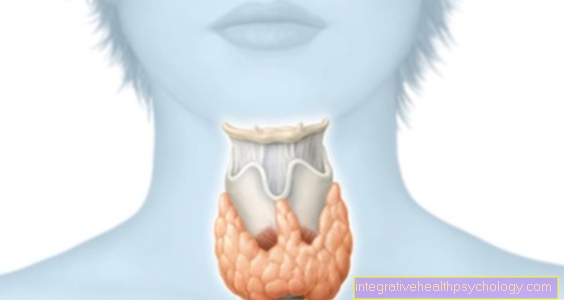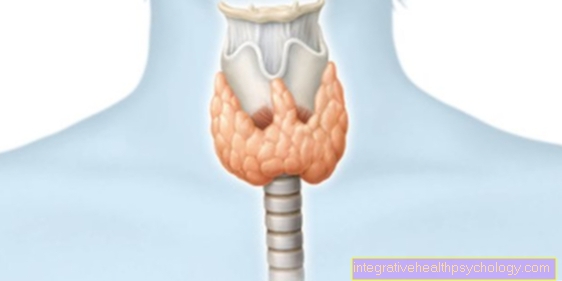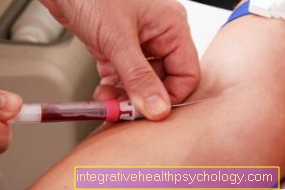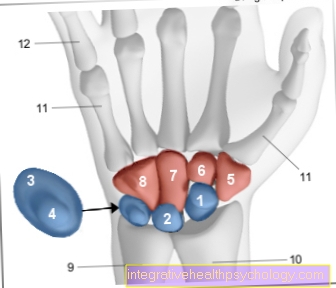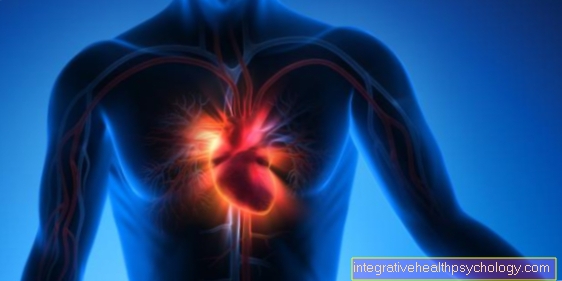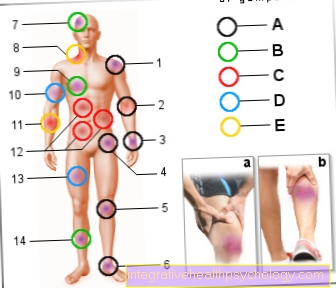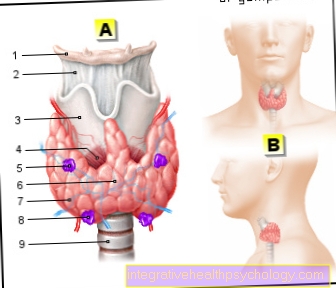Menopause symptoms
Synonyms
Climacterium, Climacterium, Klimax, Climacter, Climax
English: climacteric
Symptoms

Most women perceive the onset of menopause through increasing disturbances in their cycle (menstrual disorder). These include both a changed duration of the cycle (shorter or longer), the bleeding rate (weak, greasy, or strong) as well as the complete absence of the menstrual period (Amenorrhea).
A third of all women experience menopause without any subjectively perceived symptoms. The remaining two-thirds of women report various complaints, with only one third of women having very pronounced symptoms and feeling that their everyday life is impaired if untreated.
The symptoms and signs that occur during menopause are particularly determined by the lack of estrogen described above. This so-called estrogen deficiency syndrome includes three specific signs of menopause.
These are menstrual disorders in the premenopausal phase, i.e. in the time before menopause, as well as hot flashes and the regression of the inner vaginal vault (vagina) and the mammary glands. The hot flashes are the most common symptom of menopause.
Since the female sex hormones not only have effects on the genital organs, but also influence a number of other organs, further changes in the female body are observed, caused by the lack of estrogen and progesterone.
These include physical symptoms such as:
- Joint problems (especially osteoarthritis)
- Muscle discomfort
- Palpitations
- sweat
- Hot flashes
- Urinary tract problems
- Bladder weakness
- Indigestion
- Drop in performance
- Hair loss
- Dryness of the mucous membranes and
- other skin changes
Read more on the subject below Lack of estrogen and palpitations during menopause
But psychological changes such as sleep disorders, irritability, mood swings and nervousness are also part of it.The menopause in particular is a time for women with many changes in their everyday lives and requires a reorientation.
This includes both one's own body awareness, but is also largely shaped by the social environment of women and their living conditions. If the woman in her menopause experiences rejection and devaluation due to the loss of her reproductive capacity, it has been proven that the woman's symptoms increase.
All ’physical and psychological phenomena can be summarized under the term climacteric syndrome.
The symptoms of menopause that occur are divided into three groups based on their temporal effects on the body. The group of short-term effects includes hot flashes and sleep disorders, the medium-term effects include skin changes and psychological phenomena, and the long-term physical effects are bone loss (osteoporosis) and hardening of arteries (atherosclerosis).
It is precisely the breakdown of bones caused by the lack of estrogen that very often leads, unaffected, to changes in the spine, which lead to a reduction in body size as well as restricted mobility and the so-called widow's hump. Back pain and joint pain lead to a reduction in performance and also the risk of bone fractures (Fractures) increases significantly.
The above-mentioned regression of the mucous membrane after menopause, especially in the area of the vagina, leads to a loss of elasticity of the tissue. Therefore, pain can often occur during intercourse, which is known as dyspareunia.
Menopause and the loss of menstrual bleeding also have positive effects on a woman. This eliminates the symptoms that would otherwise exist before and during a monthly cycle. The occurrence of small benign tumors in the uterine muscle layer, so-called myomas, is also significantly reduced.




